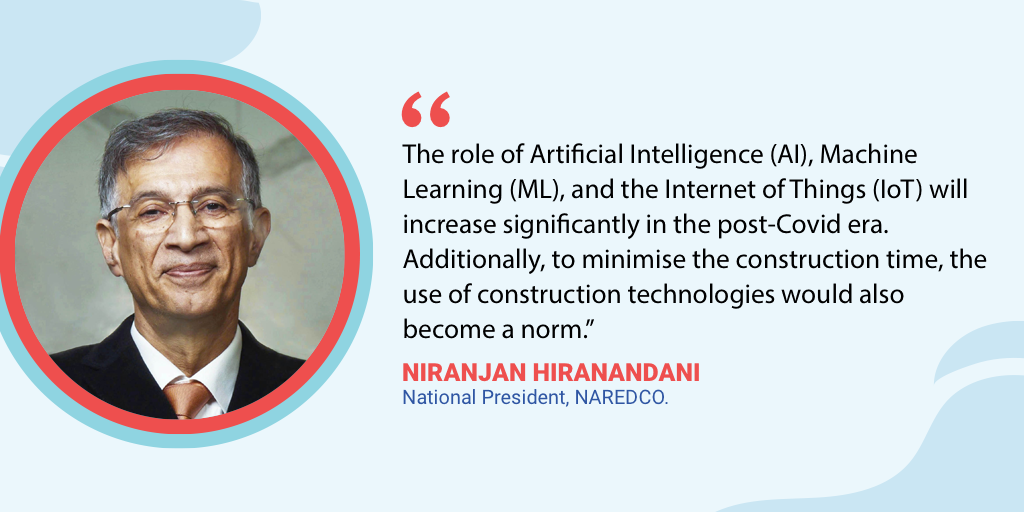Over the last year, the real estate sector has taken a complete digital leap to serve customers facing mobility restrictions. “During the pandemic, developers made a total shift to digital platforms to market their products, which ensured sales velocity,” said Niranjan Hiranandani, National President, NAREDCO.
In an exclusive interview with RoofandFloor, he spoke about emerging trends, rising sales, REITs, and much more. Here are the excerpts.
What are some key trends that we can expect in the residential market?
During the pandemic, developers made a total shift to digital platforms to market their products, which ensured sales velocity. This trend is likely to continue in the coming months. Further, the role of Artificial Intelligence (AI), Machine Learning (ML), and the Internet of Things (IoT) will also increase significantly.

Additionally, to minimise the construction time, the use of construction technologies would be imperative. The technologies for modular construction like precast systems, formwork systems, steel construction – that are already in use to some extent, will become a norm in the post-Covid era. This will also reduce dependency on migrant labourers.
Lastly, traditional renters will continue to morph into first-time homebuyers, and existing homeowners will ‘upgrade’ to larger homes.
According to several market reports, sales are finally moving in the upward direction. Where is this demand coming from?
The Covid-19 pandemic has made it apparent that the safest place to be during a lockdown is within one’s own home. Given this, new millennial first-time homebuyers, fence-sitters, traditional renters, and working women are primarily driving housing demand.
The second wave has also seen many existing homeowners ‘upgrade’ to larger homes, with the realisation that ‘work and study from home’ will be around for some more time.
Developers are anticipating project delays due to the second wave of Covid-19. What can be done to address this issue?
Labour shortage and unavailability of raw material due to the subsequent lockdowns are two main reasons for the anticipated project delays.
Last year, the government treated the pandemic as an ‘Act of God’ under legal and regulatory aspects. The second wave has also caused a similar set of problems, but this time it wasn’t ‘one country – one lockdown’ as different states saw infections peak over different timelines. So, in theory, even if state A was not under lockdown, it was a challenge to get material and labour from state B, which was under lockdown.
Given this, if the authorities can bring back the norms introduced during 2020, it would significantly help the real estate industry.
Over the last year, the government announced various measures to boost consumer sentiment. Do you think there’s more scope from the government’s side?
Most of these measures have been directed at boosting sentiment. However, there is a need for measures that will put more cash in the hands of the consumer. Boosting consumer sentiment is only one part of the problem; there is a need for measures that will go beyond sentiment and provide money that can be invested/ spent by the consumer.
Despite the pandemic, REITs are gaining ground. What is the future of REITs in India?
REITs are a globally accepted investment asset class, which has recently been added to the Indian scenario. Given the benefits it offers, it was a foregone conclusion that REITs will gain ground. It is the pandemic that has resulted in a slow rollout. For the investor in Indian commercial real estate, REITs offer an option that fits into the investment plan of most individuals who opt for real estate as an asset class. The future for REITs in India will be positive.
Are property prices headed for a correction?
Market dynamics are shifting with available inventories of ready homes reducing. As the vaccination drive progresses, we are seeing a return to ‘near normalcy’. The buyer sentiment has remained high despite the second wave. This suggests that the ‘price correction’ will most likely be in the upward direction. Thus, a smart buyer will take advantage of the current situation and invest while it is still a buyers’ market.





